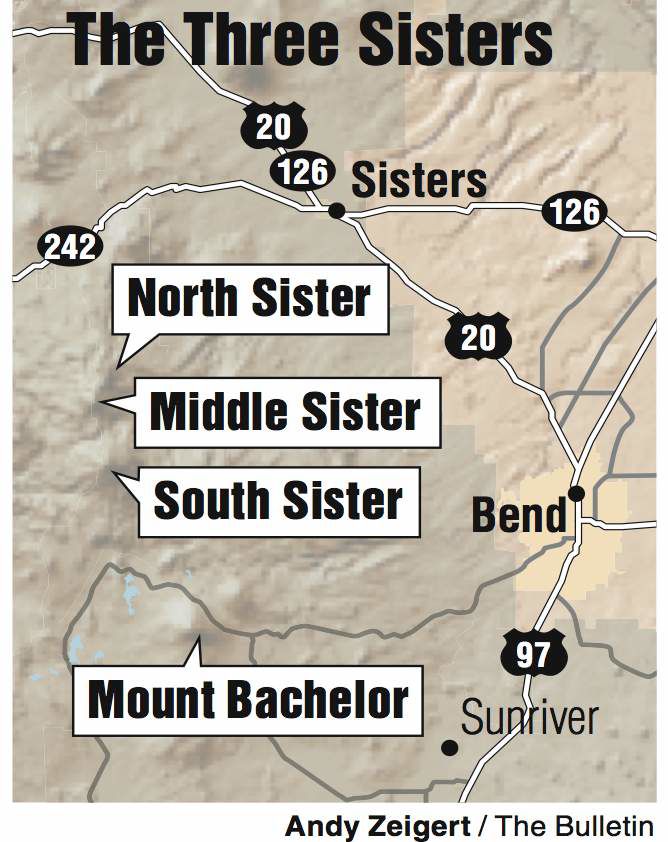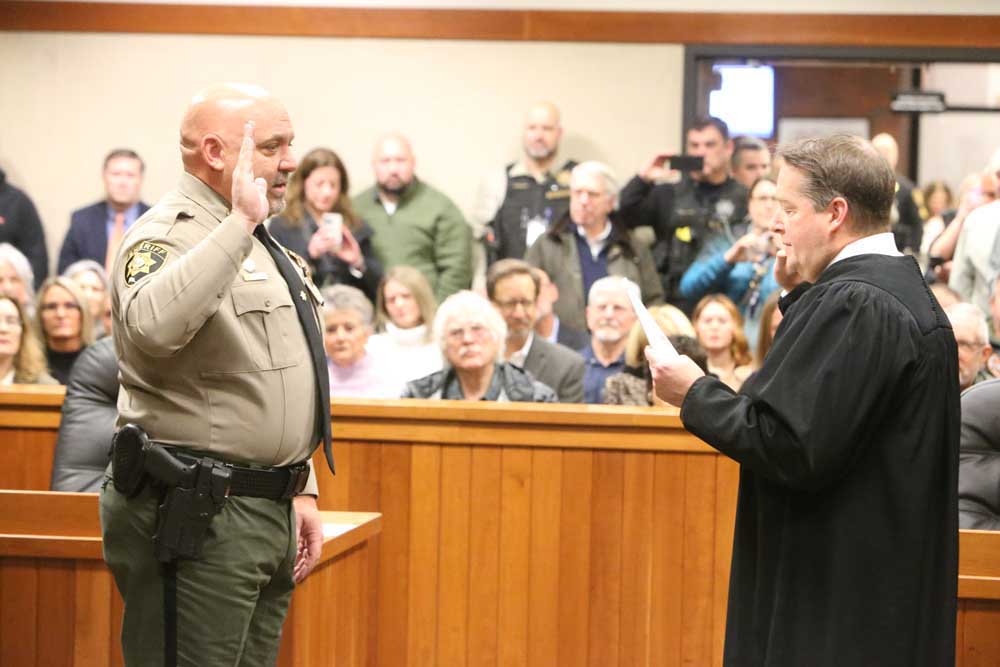Sisters peaks: Young siblings of the Cascades
Published 5:00 am Sunday, September 27, 2009

- Sisters peaks: Young siblings of the Cascades
In this occasional feature, we explore the origins of Central Oregon place names. To suggest a place name for explanation, contact Julie Johnson, jjohnson@bend bulletin.com or 541-383-0308.
What: Three Sisters family of volcanoes
Where: Cascade Mountains west of Bend
It’s no secret that the Three Sisters define Bend’s alpine skyline. Majestically snow-capped in the winter, starkly fascinating in the summer, the mountains are three links in the chain of volcanic summits that make Central Oregon’s sunsets so postcard-perfect.
But the Three Sisters are just the most visible part of a “family” of volcanoes in the region. Joining them are lesser peaks dubbed The Husband, The Wife, Little Brother and, of course, Mount Bachelor.
The Three Sisters are the most accessible and most geologically complex mountains in the High Cascades, according to Ellen Morris Bishop in “Hiking Oregon’s Geology.” The area began erupting about 5 million years ago, but the high peaks we see today are much younger, the result of eruptions beginning 300,000 years ago. The oldest peaks in the area — The Wife, The Husband, Broken Top and Black Crater — are also the most glacially eroded. The Wife and The Husband are on the west side of the Three Sisters. Little Brother is a parasitic cone eruption on North Sister’s northwest side.
The Three Sisters were nicknamed, from the north, Faith, Hope and Charity, according to “Oregon Geographic Names” by Lewis A. and Lewis L. McArthur. The origin of the nicknames is not documented, but Lewis A. McArthur says in the book that early Bend settler William P. Vandevert told him the mountains were named by Methodist missionaries from Salem in the 1840s.
One more thing: Mount Bachelor wasn’t always a Mount. In the early days of Bend, it was frequently called Brother Jonathan, in contradistinction to the Three Sisters, according to “Oregon Geographic Names.” But because of its isolation from the main spine of the Cascade Range, its official name was Bachelor Butte (buttes being, generally, isolated hills not part of more complex geological formations). When the developers of Mt. Bachelor decided to build a ski area there, they figured skiing on a butte would be considered small-time, according to Lewis L. McArthur, and so used the moniker Mt. Bachelor. In 1983, the Oregon Geographic Names Board made the name change official. “Commercial interests succeeded in replacing a fine, old, euphonious name with a commonplace form,” McArthur said.
— Julie Johnson, The Bulletin






